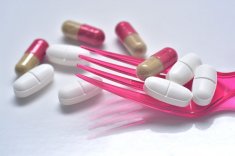Cialis (tadalafil) is the third prescription drug approved by the US FDA for treating erectile dysfunction (ED) or impotence in men. Clinically, the term impotence is no longer being used and the inability of a man to get and keep an erection firm enough for sexual intercourse is simply referred to as male erectile disorder or erectile dysfunction. In lay usage, impotence has a derogatory connotation and its true meaning often confused many. Impotence is a reproductive system disease in which one is unable to engage in a sexual act due to various reasons, which may include sexual arousal problems, premature ejaculation, inability to gain an erection, or having a weak erection. In this sense, the term can also be applied to women sexual disorders.
Cialis, just like Viagra (sildenafil) and Levitra (vardenafil), is a reversible phosphodiesterase 5 inhibitor (PDE5) that enhances erectile response to sexual stimulation by increasing blood flow to the penis. Compared to sild ...
Viagra and Cialis belong to the drug class phosphodiesterase type 5 (PDE5) inhibitor that works for treating erectile dysfunction (ED), or the inability to attain and maintain an erection, in men. The main difference of the two is how long they stay in your system. Cialis (tadalafil) has the longest duration among widely used ED drugs in the market; its effect is said to last up to 36 hours compared to four- to six-hour duration of Viagra (sildenafil). Because Cialis can remain in your system longer, you don’t have to limit your sexual activity within a short timeframe. However, it can be a downside if you are taking other medications that may interact with the drug.
PDE5 inhibitors work by improving blood flow to the penis. Erection is attained when the chambers of the penis called corpora cavernosa are filled with blood. The spongy tissues inside these chambers allows the pooling of blood, which leads to an erection. A person with erectile dysfunction may have ce ...

